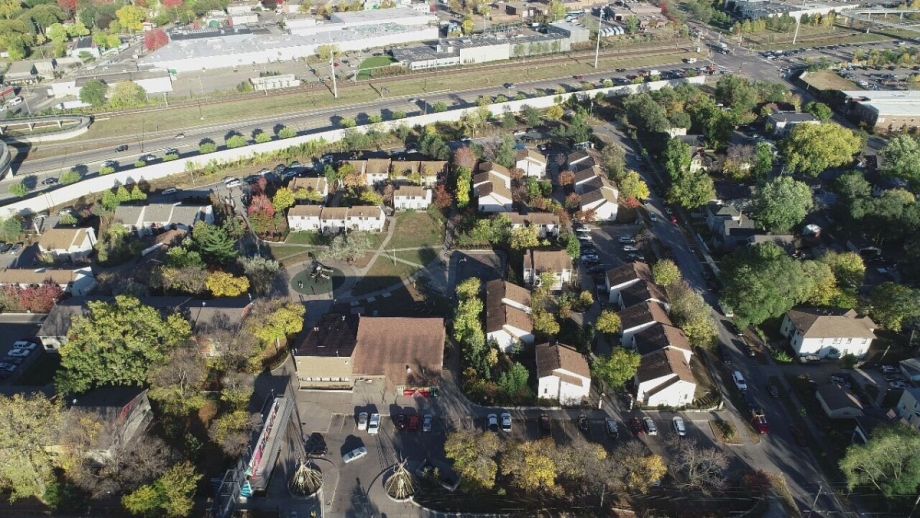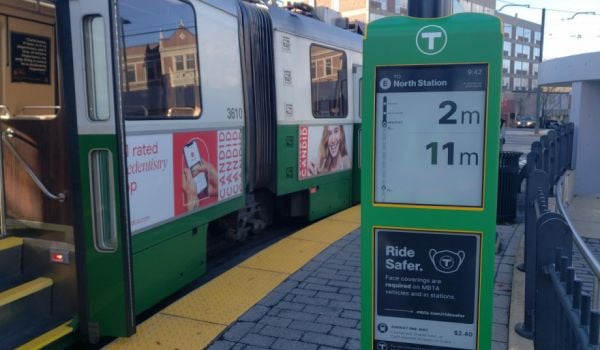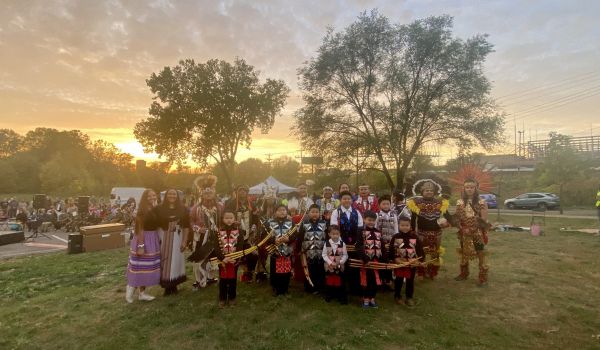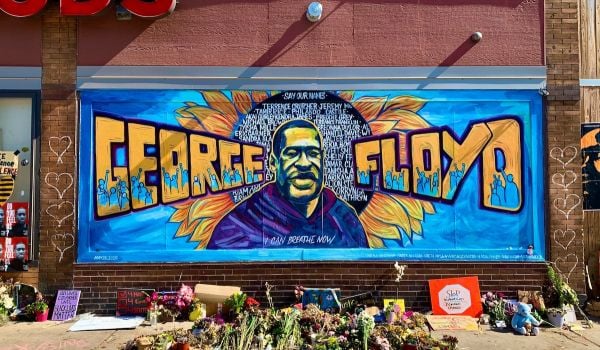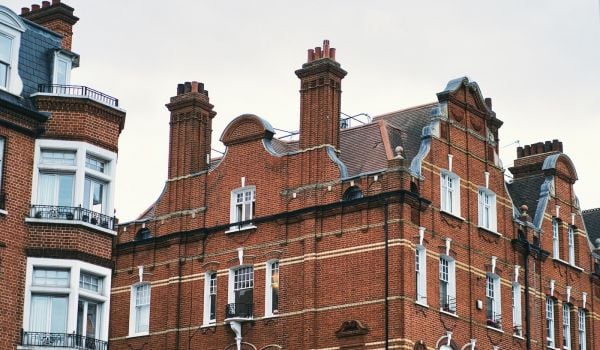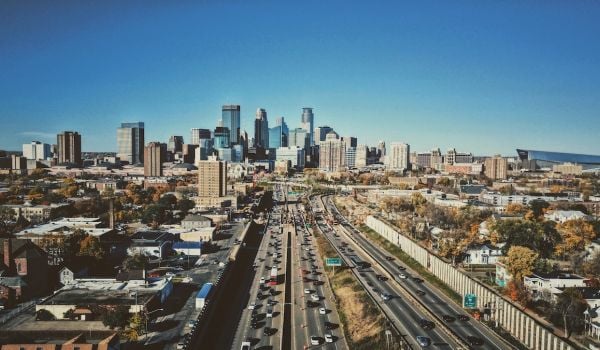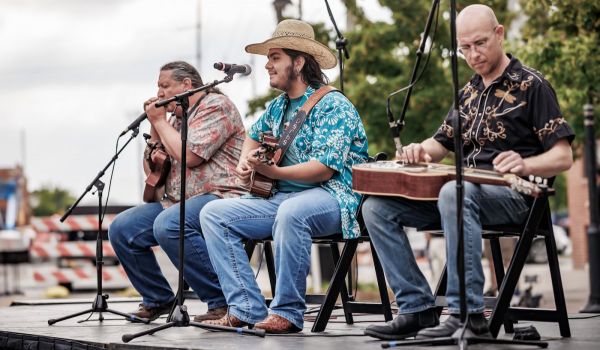In this excerpt from “American Indians and the American Dream: Policies, Place, and Property in Minnesota,” University of Wisconsin professor Kasey R. Keeler examines the beginnings of Little Earth, the first and only Native-preference public housing complex in the United States.
During the second half of the 1960s, on the heels of the civil rights movement and in the midst of a steadily growing urban Indian community, American Indian community members in Minneapolis and Saint Paul began to meet to discuss the many issues urban Indians across the Twin Cities were facing.
These community gatherings eventually became the foundation for the politically minded American Indian Movement, widely recognized as AIM. It would not be long before “AIM and its leaders saw the need for a native-oriented housing development to help American Indians transition from the reservation to the city without losing touch with their traditional values” researcher Robert G. Style writes. “AIM worked with government agencies and social service organizations to make this native-run housing community a reality.”
And thus, the origins of the first and only Native-preference public housing complex in the United States, located in South Minneapolis, took root.
As a Native-preference housing program, Little Earth has continuously offered programs specifically for its American Indian residents. Today, residents can access basic social service programs and, equally as important, culturally relevant support services, including educational programs, elder care, health services, and cultural activities.
Little Earth lies in the heart of the south Minneapolis Phillips neighborhood with immediate access to the American Indian Cultural Corridor, where a whole city neighborhood is experiencing Native-centered revitalization. At once, Little Earth is a place where community members work to reclaim a previously lost space and struggle for funding to house American Indian people who have long called Minneapolis home.
Housing urban Native people
The initial and primary objective of the Little Earth housing complex, at the time known as the South High housing complex due to its location on the site of the old high school in South Minneapolis, was to provide housing and a variety of community services to a growing American Indian population in the city.
Only one decade prior, the federally funded American Indian Relocation Program encouraged and temporarily sponsored the movement of American Indian individuals and families away from reservation communities to urban areas, including Minneapolis.
In fact, Minneapolis became a de facto Relocation destination. As the city drew Native people from northern Minnesota and Wisconsin, a Relocation office was temporarily opened in Minneapolis to aid relocatees, though the city was not designated an official Relocation destination by the Bureau of Indian Affairs (BIA).
It was also during this period that Minneapolis, and to a lesser extent Saint Paul, saw dramatic growth in the urban Indian population, largely spurred by the Relocation Program. The 1960 federal census recorded 15,496 American Indian people in Minnesota, 2,077 of whom were located in Minneapolis. Yet during the same census year, according to the Governor’s Human Rights Commission, the one tribal record estimated about 8,000 American Indians in Hennepin and Ramsey counties, where Minneapolis and Saint Paul are located.
These population records mark a dramatic increase in American Indians in the metropolitan area — the very areas American Indian people were removed from during the treaty-making era and Dakota exile 100 years prior.
During the 1960s and into the 1970s, despite the numerous studies and government reports that highlighted the need for improved Indian housing on reservations and in urban centers, the federal administration for Indian policy rapidly shifted. This disorganization allowed for a major gap in funding — the housing needs of off-reservation American Indians. This aspect of Indian housing was and continues to be overlooked, despite the Relocation Program that moved thousands of Indian people to metropolitan areas across the country from the 1940s to the early 1960s.
To redress this negligence, my new book “American Indians and the American Dream” examines the creation and operation of the Little Earth housing complex, whose residents are predominately American Indian and enrolled tribal members. This focus underscores the ways the federal government has failed and continues to fail urban Indians, particularly in terms of housing. By centering urban Indians and Little Earth, I demonstrate the tensions present in the administration of HUD programs, barriers to housing caused by bureaucratic red tape that ties up housing resources, and the gap in housing programs for off-reservation Indians.
The lack of federal funding available for providing safe and adequate housing for urban Indians is particularly troublesome when we pay attention to to the activism of the 1960s and 1970s. The activism of communities of color and American Indian communities led to changes in civil rights and advances in racial equality, specifically for Black people. The 1970s also saw the advent of the Indian Self-Determination and Education Assistance Act, which worked to give tribes more autonomy and voice in how federal funds were administered. A close look at Indian policy and housing policy during the 1960s and 1970s reveals the disconnect between need and policy.
The Little Earth housing complex has been a Native-led response to house Native people, including the hundreds who arrived in Minneapolis as participants in the Relocation Program. The complex is an urban Indian housing program akin to reservation-based housing programs with preferential placements, occupancy and access to Indian-specific funding.
By limiting the federal funding that Little Earth is eligible for, HUD denies historic treaty obligations to tribal nations and Indian people. Instead, much of Indian housing falls under Great Society–era programs based on income and need, rather than acknowledging the distinct and unique legal/political relationship that exists between tribal nations and the federal government — in essence, the foundation of trust responsibility.
Little Earth, as the only nontribal American Indian–preference low-income housing complex in the United States, though multitribal, should be able to access Indian housing funds based on the tribal membership of its residents rather than be designated solely as a public housing complex. Individual Indian residents should be eligible for Indian housing funds off-reservation, flowing directly from the federal government.
Instead, the limitations imposed by the federal government and HUD prevent access to a wide variety of funds that would otherwise be available to Indian people through the Office of Native American Programs, which currently administers Indian housing programs for HUD.
A ‘groundbreaking’ project
When construction on the $4.5 million South High housing complex for low-and middle-income families began in 1971, the groundbreaking was accompanied by traditional drumming and Native singers. The housing project, set to include 39 apartments, 167 townhomes and designated recreation areas, was to be finished within a two-year time frame.
Interestingly, the original owner and sponsor of the housing complex was the Saint Paul–Minneapolis Archdiocese and the Minnesota Council of Churches, who had established an Indian Housing Committee of various American Indian leaders from across the Twin Cities to provide guidance and serve as a board to oversee implementation.
With a $4.4 million Federal Housing Administration mortgage, supplemental federal funds provided by the Model Cities program and local funds secured through the Greater Metropolitan Housing Corporation, construction on the first and only urban housing project proposed by and for American Indians began.
Local newspapers were abuzz with news of guaranteed financing for the landmark housing complex. Unlike any other, it was described as a “housing project to aid Indians,” “the first of its kind in the United States to be conceived of and initiated by urban Indians,” and a “groundbreaking” event.
Today, the housing complex is widely recognized throughout the Minneapolis-Saint Paul region simply as Little Earth or, more formally, Little Earth of United Tribes, Inc. It remains the only the country’s only American Indian preference project-based Section 8 rental assistance community.
Many non-Natives in the area inaccurately see Little Earth as a reservation rather than the predominately Native public housing complex that it is, precisely because of the large number of American Indians who call it home and the cultural services in the immediate vicinity.
Today, Little Earth houses approximately 1,000 residents, 98% of whom identify as American Indian. More than 30 tribal nations are represented at the housing complex, and 65%of those who call it home receive public assistance. This is a dramatic increase in Native occupancy from the early 1970s, when only 40%of the residents identified as Native American.
Today, limited by its size and ability to access funding, Little Earth maintains a waitlist of nearly 500 family units, largely reflective of the demand for affordable housing in the Twin Cities, particularly for American Indian families.
Though widely celebrated with community and financial support, the fervor over the construction of the first-of-its-kind Indian-preference housing project wouldn’tt last. Due in large part to high vacancy rates, rent collection problems, shoddy construction, and poor management, by early 1975, the AIM took over the housing development as financial difficulties threatened Little Earth’s future.
With rent payments as the only source of income, the housing development struggled to stay afloat. As described in a 1975 Minneapolis Star article, “Members of the nonprofit housing project [Minnesota Council of Churches] were unable to make mortgage payments for January, February, and March.” That left HUD “looking for new management for the two-year old low and moderate-income housing project so the office would not have to foreclose the mortgage,” the Star reported. At the same time, the complex was at risk of being condemned.
Rather than lose the short-lived investment and evict all tenants, HUD and the Indian Housing Committee board of directors decided “unanimously that the national American Indian Movement office should be recognized as the responsible agent to appoint a new board” in a last-ditch effort to save the housing complex, the Star chronicled. AIM’s then-leader Dennis Banks (Leech Lake Ojibwe) was soon appointed new director of the housing complex.
As change and uncertainty at the urban housing complex continued, another turnover of leadership at Little Earth occurred. In his new role as president of the National Congress of American Indians and as a BIA administrator with experience in economic development, Leon Cook (Red Lake Ojibwe) attributed the financial problems of Little Earth to the “altruistic idea” of the Archdiocese and the Minnesota Council of Churches who did not “come to grips with the fact that … it had to be run like a business,” according to a 1975 Minneapolis Tribune report. Instead, he opined, the nonprofits had allowed residents to live there, in certain cases, rent free, including nuns belonging to the Archdiocese.
When planning for the Minneapolis Indian-preference housing program was in its early stages, HUD had only recently become a cabinet-level agency. This coincides with the shift in federal Indian policy more generally toward programs based on need rather than race – specifically programs aimed at poverty, rather than programs based on tribal nations’ distinct political-legal status and the federal government’s treaty obligations.
The temporal moment of Little Earth also coincides with the move away from Termination Policy, including the Relocation Program, and the shift toward American Indian self-determination. Yet upon closer analysis, remnants of Termination can be seen in the absence of off-reservation housing programs for Indian people.
In many ways, American Indians were thought not to exist once they crossed the reservation boundaries. As a component of Termination Policy, the Relocation Program provided limited assistance to Indian people who left the reservation to relocate to an urban destination, including one-way transportation to the designated city, short-term housing and a small stipend for living expenses. The overall goal of Termination was to terminate federal obligation, an objective in many ways carried out by moving Indian people to urban areas away from reservations.
Little Earth took shape to the backdrop of this recent history. Now, in the 21st century, Little Earth remains unique as a housing complex envisioned by and for American Indian people, a place where culture and capitalism intersect.
Excerpt adapted from “American Indians and the American Dream: Policies, Place, and Property in Minnesota” by Kasey R. Keeler. Published by the University of Minnesota Press, 2023. Copyright 2023 by the Regents of the University of Minnesota. All rights reserved. Used by permission.

Kasey R. Keeler (Tuolumne Me-Wuk and Citizen Potawatomi) is assistant professor in the Department of Civil Society and Community Studies and in American Indian Studies at the University of Wisconsin, Madison.

